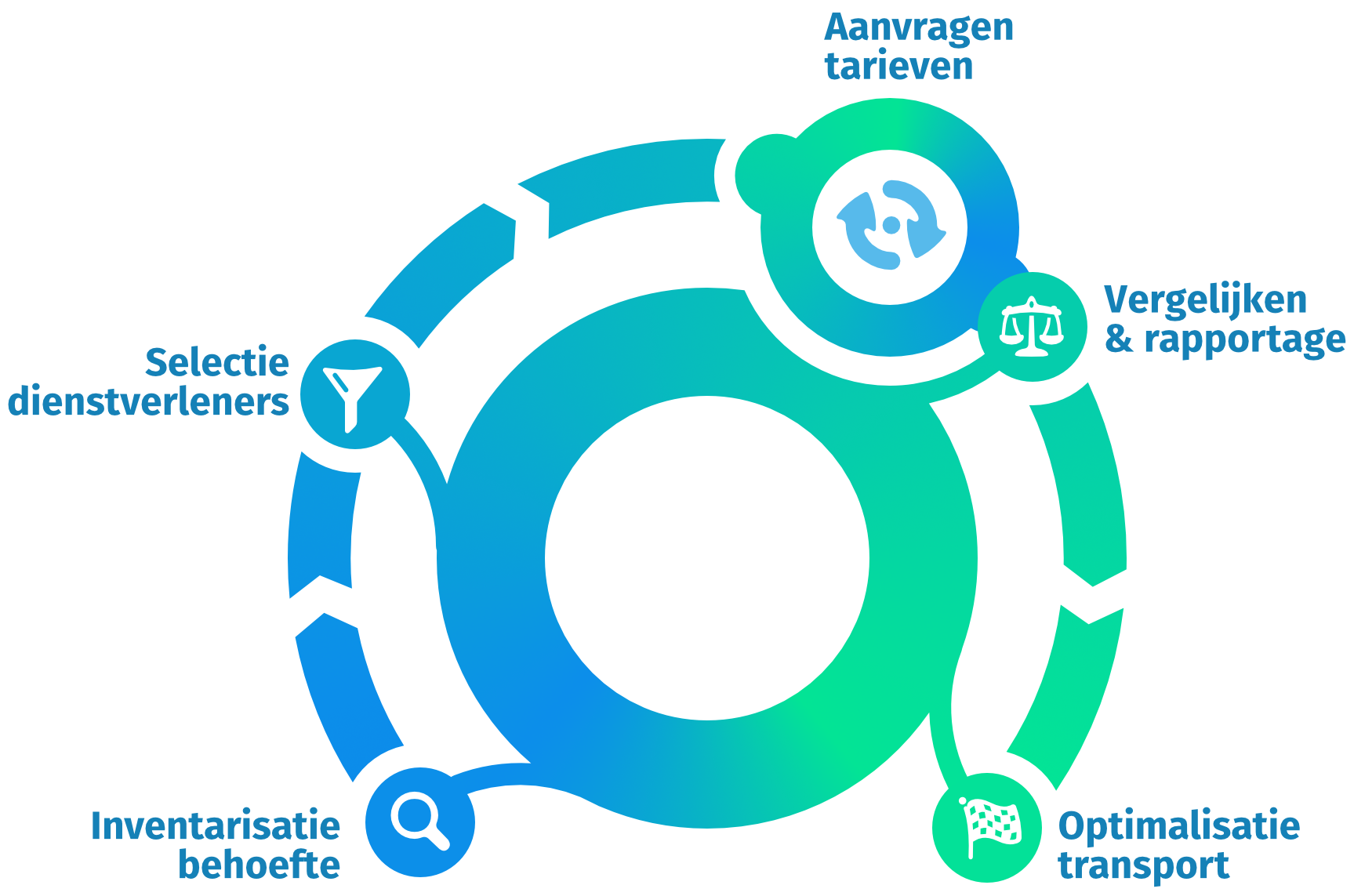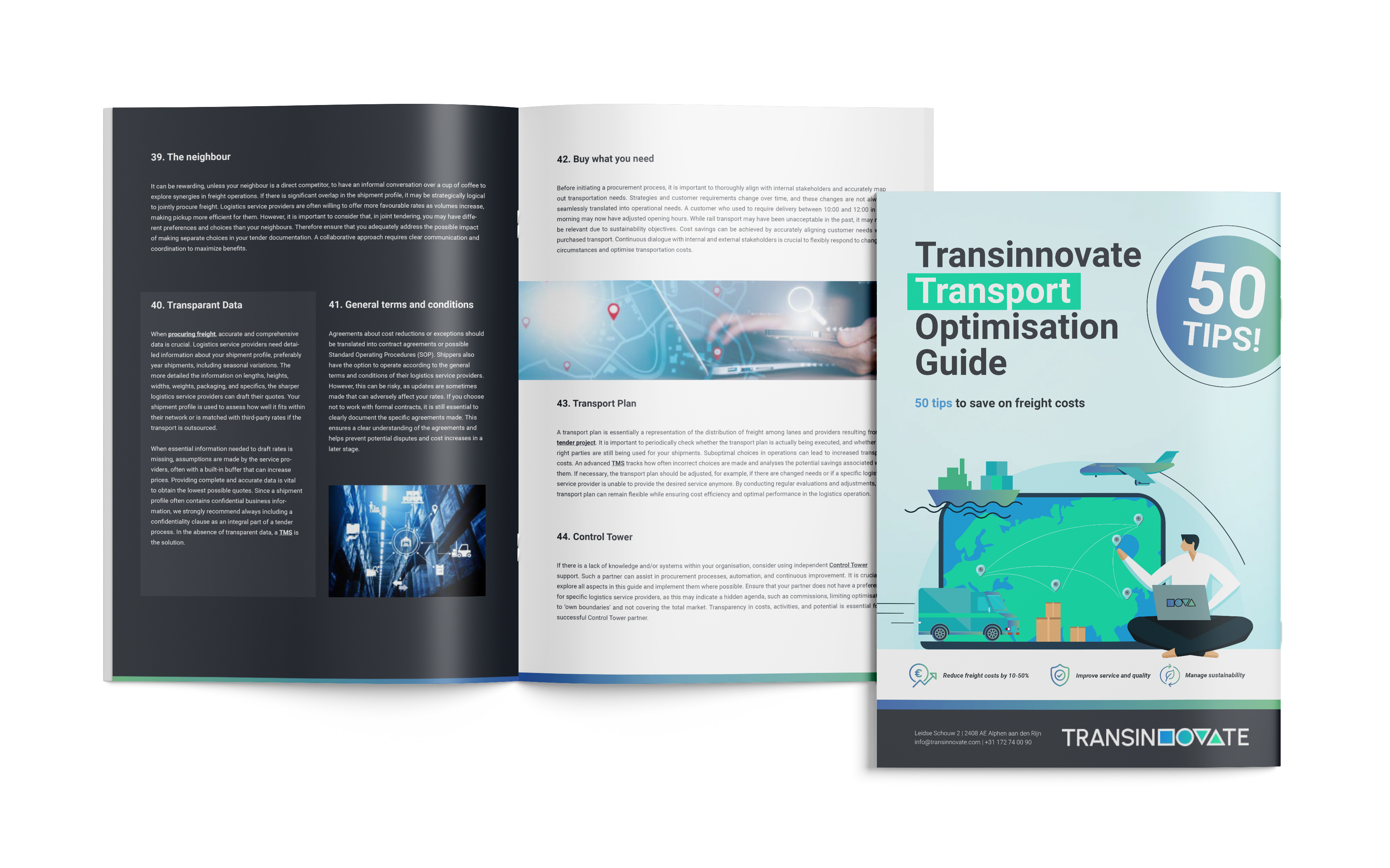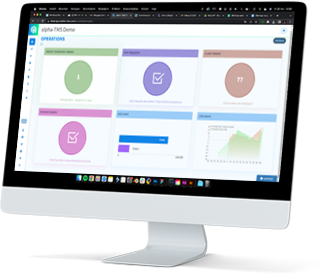Bij het inkopen van transport zijn er diverse valkuilen. De komende periode zal ik er een aantal uitlichten. Vandaag laat ik zien hoe snel inkopers van transport de bocht uit vliegen door het voorschrijven van een staffel.
Transport inkopen is complex! Waarom? Tarieven zijn vaak niet transparant door de enorme ondoorzichtige tarieftabellen. De vaak grote staffels waarmee laadmeters en kubieke meters omgebouwd worden naar kilogrammen, en de postcode zoneringen verschillen altijd per serviceprovider. Voor iedere serviceproviders die deelneemt in een RFP/Tender krijg je per land+ locatie combinatie weer een andere tabel. Dan hebben we het nog niet eens over de eventuele (brandstof) toeslagen die ook nog impact hebben op het tarief. Zelfs de meest gelouterde Business Advisor en/of Excel Specialist brandt zijn handen er liever niet aan.
De “oplossing” die veel inkopers van transport, en zelfs de meeste online Tender Tools / Inkoop softwareprogramma’s hanteren; we schrijven een vaste tabel/staffel voor en maken daar een template van die de deelnemende serviceproviders moeten invullen! Want deze kunnen we dan wel makkelijk(er) vergelijken. Ik noem dit graag een “Killing Template”. Een template welke aan de voorkant zorgt voor een besparing in tijd bij de inkoper. Maar waardoor aan de achterkant in veel gevallen de echte sterktes van de serviceproviders niet naar voren komen, en daardoor euro’s met bakken tegelijk weggegooid worden. Ik zal dit illustreren met een simpel rekenvoorbeeld:
Stel je voor dat we de onderstaande template voorschrijven aan een tweetal serviceproviders. In dit voorbeeld ligt de focus op een 40-tal kleinere zendingen tot aan 500 kg. Daarom hebben we een template gemaakt, met een nette staffel lopend van 0 tot 500 kilogram in stappen van 100 kilogram. We hebben om het rekenvoorbeeld overzichtelijk te houden ingezoomd op 1 postcode (gebied) en gewichten tot 500 kg, normaliter zijn de staffels veel groter!
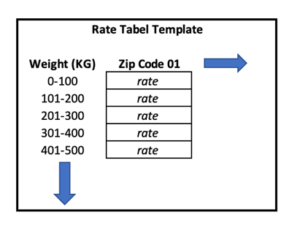
In dit voorbeeld krijgen we onderstaande tarieftabellen van de beide serviceproviders terug als “best offer”.

We nemen vervolgens onze 40 zendingen (voor het gemak 2 zendingen per gewicht categorie), en zetten daar de tarieven achter die uit de tabellen komen. Zo vertalen we de tarieven van beide serviceproviders naar feitelijke kosten voor het zendingsprofiel, oftewel accurate beslisinformatie.
 In de analyse wordt duidelijk dat we op basis van prijs voor serviceprovider A moeten kiezen (ervan uitgaande dat de kwaliteit en service van beide vervoerders hetzelfde is). De zendingen laten uitvoeren met serviceprovider A kost € 5.792, wat € 384 (ongeveer 6%) goedkoper is vergeleken met serviceprovider B. Op het eerste gezicht zou je kunnen denken: goed gedaan, strik er omheen en voorlopig zijn we weer even klaar met dat lastige en tijdrovende tenderen.
In de analyse wordt duidelijk dat we op basis van prijs voor serviceprovider A moeten kiezen (ervan uitgaande dat de kwaliteit en service van beide vervoerders hetzelfde is). De zendingen laten uitvoeren met serviceprovider A kost € 5.792, wat € 384 (ongeveer 6%) goedkoper is vergeleken met serviceprovider B. Op het eerste gezicht zou je kunnen denken: goed gedaan, strik er omheen en voorlopig zijn we weer even klaar met dat lastige en tijdrovende tenderen.
Maar stel je nu voor dat provider A toevallig exact dezelfde tariefopbouw heeft zoals onze template, maar provider B normaal zelf een andere staffel hanteert, met kleinere stapjes. Of een prijs per 100 kg, per kg of een dergelijke andere offerte vorm. Als we serviceprovider B zijn eigen template hadden laten hanteren, had de ontvangen tabel er bijvoorbeeld zo uitgezien:
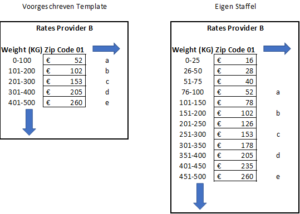
We zien dat voor de voorgeschreven gewicht categorieën a t/m e exact dezelfde tarieven terug in beide offertes. Oftewel de serviceprovider B heeft veel tijd en energie gestoken om hun tarieven uit hun eigen staffel netjes in het voorgeschreven template te plakken (wat overigens regelmatig gepaard gaat met fouten, is mijn ervaring). Nu Als we de analyse opnieuw doen gaat in de analyse duidelijk worden waarom het voorschrijven van een template “killing” is. Als we opnieuw de offertes vertalen naar kosten:
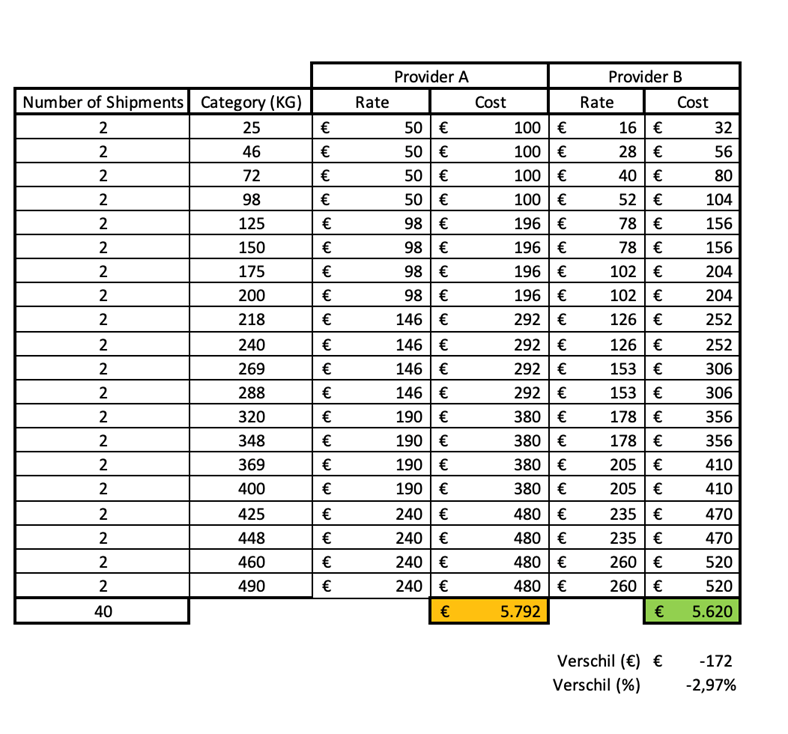
Stel je nu voor dat we het zendingsprofiel nu niet categoriseren per 100 kg, maar we het werkelijk gewicht van de zendingen gaan doorrekenen met tabel van serviceprovider A en de ‘eigen gedetailleerde’ tabel van serviceprovider B. Dan ziet het kostenplaatje er als volgt uit:
Logisch is dat voor serviceprovider A exact dezelfde kosten worden doorgerekend, namelijk de € 5.792. Serviceprovider B komt met zijn eigen staffel uit op € 5.620, en is nu ineens bijna 3% goedkoper dan serviceprovider A in plaats van 6% duurder!
Het voorschrijven van een staffel in een template is “Killing” geweest! De sterktes van serviceprovider B kwamen niet goed naar voren. Door de voorgeschreven template van provider B was bijna 10% duurder dan hij had kunnen zijn voor jouw zendingsprofiel. Zo wordt het resultaat van het inkoopproces dus suboptimaal, met verkeerde keuzes tot gevolg.
Dit is geen theoretisch verhaal, in elke project dat wij mogen verzorgen zien wij verschillen in de staffels. In dit voorbeeld praten we alleen nog maar over gewicht zoneringen, maar ook de postcode zoneringen zijn vaak verschillend en ook daar worden met vaste templates dus nog wel eens (regio)sterktes van serviceproviders onbedoeld weg gefilterd. Conclusie: het opvragen in ‘eigen templates’, (wat de meeste softwareaanbieders faciliteren) zal vaak vele procenten schelen en is dus gewoon “Killing”! Daarnaast zorgt het voor onnodig veel werk en fouten aan de kant van de serviceproviders.
Uiteindelijk ga je voor een mooi kapsel naar de kapper omdat deze beter kan knippen dan dat jij dat zelf kan. Voor inkoop van transport is het verstandig is om naar een specialist te gaan met analysesoftware die de sterktes van serviceproviders in hun eigen format kan verwerken!
Er zijn nog veel meer valkuilen en mogelijkheden bij het organiseren en managen van transport, daarover later meer.

